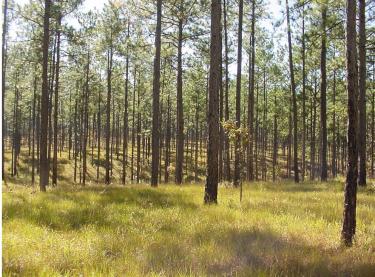What is a Longleaf Pine Forests?
Longleaf pines go by many names. In different parts of the U.S., they’re known as longstraw, yellow, southern yellow, swamp, hard or heart, pitch, and Georgia pines. But wherever they grow, they are valued for growing straight and tall.
Everything about the longleaf pine is long—from its needle-like leaves, which can grow more than 18 inches long, to its more than 300-year-long lifespan. These resilient trees once covered about 90 million acres from southeastern Virginia to Florida and as far west as east Texas.
Longleaf pines thrive where low-intensity fires are frequent. That’s because their seeds fall to the ground and must stay in contact with the soil to germinate and grow. If leaf litter and debris pile up on the forest floor, as they do in forests where fires are suppressed, the seeds can’t take root. Longleaf pines also need plenty of sunlight to grow, and can get the light they need in forests that are kept open by fire.
If the conditions for growth are just right, longleaf seeds will take root and then grow into a grass-like seedling. This grass stage can last for years, but it’s during this time that longleaf pines develop the deep and extensive root systems that support them in maturity, when they can reach heights of more than 100 feet.
Longleaf pines are tough: they can survive wildfires, droughts, strong winds and pests—including the Southern pine beetle—that destroy other pines. But they are vulnerable to:
- Brown spot needle blight, which is caused by the fungus Mycosphaerella dearnessii (also known as Scirrhia acicola) and often strikes longleaf pines during their grass stage.
- Fire suppression, because limiting fire actually leaves longleaf pines more vulnerable to disease, poor growth and competition from other trees and vegetation.
- Overharvesting due to the longleaf pine’s desirable timber. Their lumber was long used for building ships and railroads but not restored, because foresters chose to replace longleaf pines with faster-growing pines that would more quickly produce an economic benefit, and because fire suppression kept the tree from coming back on its own.
The combination of these factors has taken a toll on longleaf pine forests, reducing them to less than 3 percent of their original range. That loss carries significant costs, because these trees are important for both environmental and economic reasons.
How can I get more tips?
It’s simple! Enter your email below.

